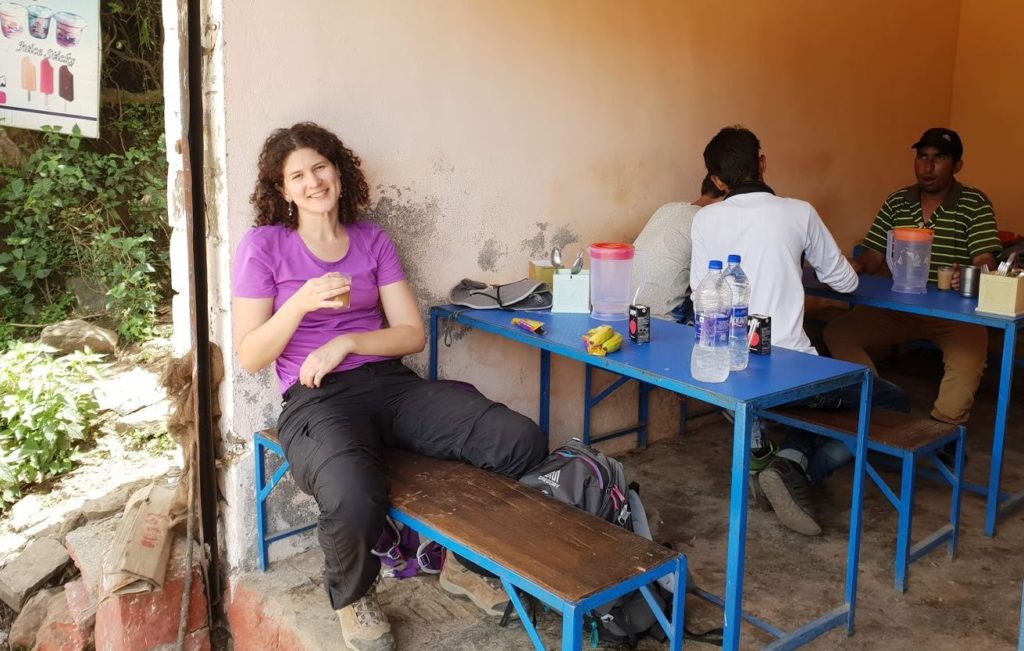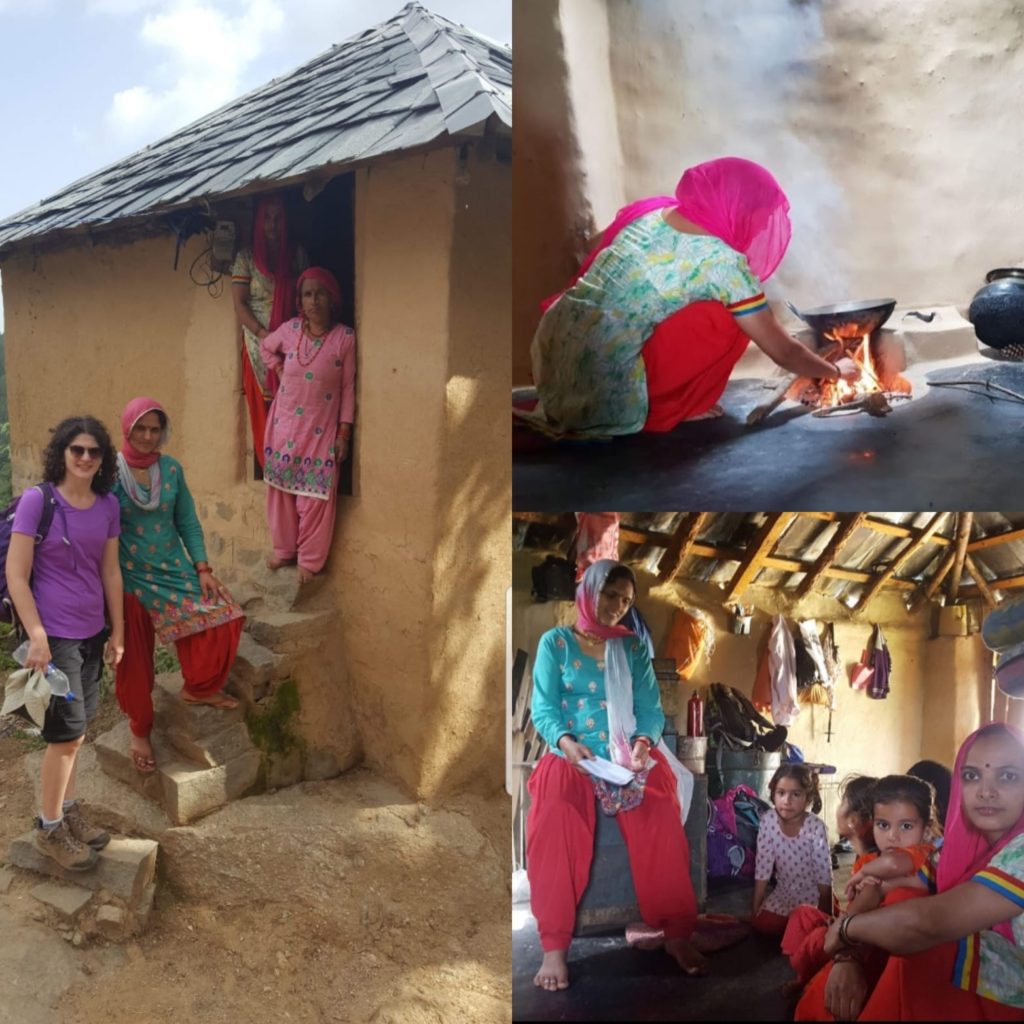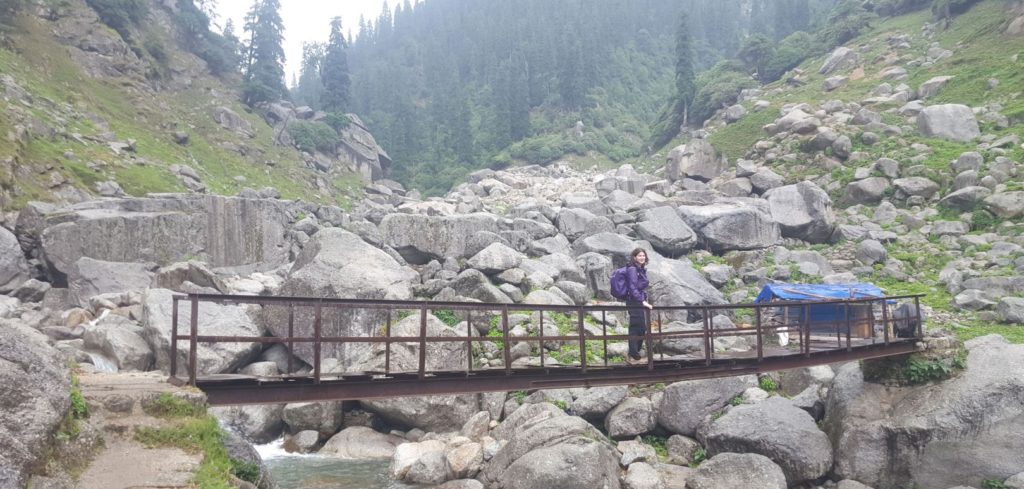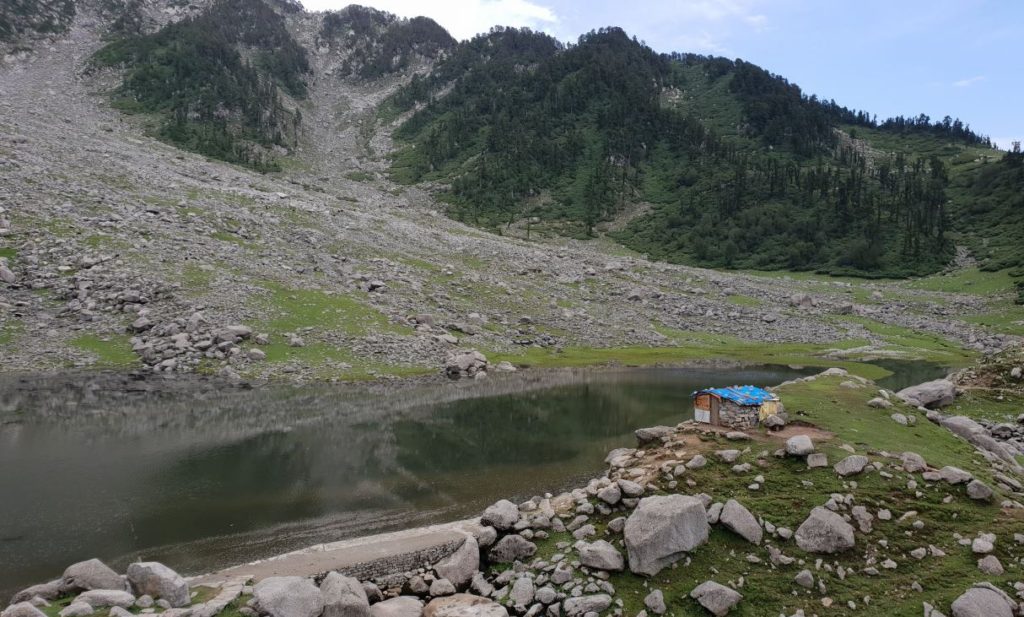Trek in North India which is not in LEH province? Is there such a thing? well yeah! When I came to Dharamshala with my mother, we felt like seeing the mountains of the place and spending a little more time in the nature of the area and not just the usual attractions here (which I detailed in a post about the villages around Dharamshala). So instead of going like everyone else on a one-day trip to Triund, we opted for a three-day trek to Lake Kareri.
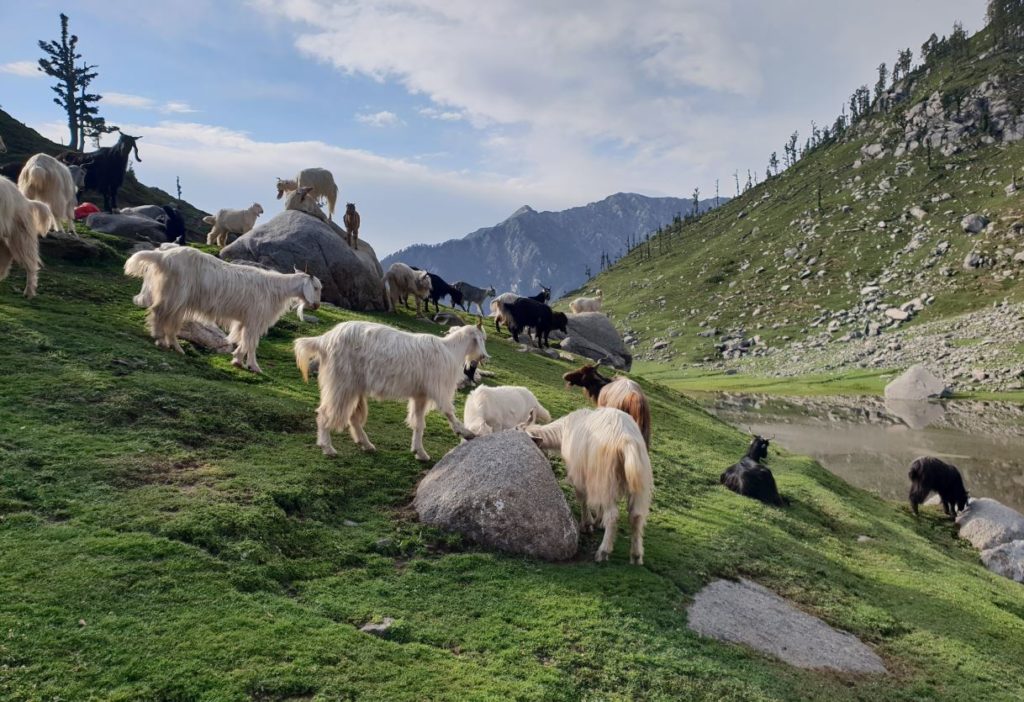
Trek in Dharamshala area: Preparation and equipment required
We set up the trek the day before through Raj Travel Agency in Darmacott, who arranged for us the guide Sanji who also carried a tent and two sleeping bags for us and was with us all the time. We carried the rest of the equipment ourselves in a 30-liter hiking backpack: mountain shoes and sandals, a towel (there was a shower on the first night), a raincoat, a sweater, a scarf, hiking pants, three replaceable short shirts, a hat, toilet paper and medicine. Also recommend bringing a water purifier because there was not always where to buy mineral water. We were not required to bring food because we ate on the way and even took care of sweets and fruits.
Raj’s number at Wattsapp: +919736641934
Sanji’s email: sanjaymountk@gmail.com
The trip cost $ 270 for both of us and that included the guide who carried us our tent and bags, food, snacks, village accommodation and taxi back.
A few words about the trek to Kareri Lake
The trek is in the Himalayas, in very wooded and green areas used in the summer months for pasture. Despite the thousands of cattle and sheep heads there, nature has not been greatly affected and the water has not been polluted. Most of the inhabitants you will find in the mountains are herdsmen who come to graze their herds during the three months of summer (June to September), the most beautiful period for trekking in the area. Birds are plentiful, but other small mammals are also there and even bears that hide well. The monkeys incidentally chose to stay in Dharamshala and Kareri village, next to the people’s food.
Here you will find a map of the way we did and where we went. Note that this is not the exact walking path we walked and so you should not rely on it as a field navigator.
The first day - on the way to Kareri village
The first day opens with a short drive from our Guest House in McLeod Ganj to a trail below Nadi Village. The road started in a thick forest with buffalo and cows grazing there and down to the village of Ghera. It is important to note that without a guide it will be very difficult to find the way so I do not recommend going on this trek alone. On Ghera main street (which is very far from the houses in the village but the only one on the road) we had lunch in a simple restaurant and then started on the climb to the village of Kareri. On the way, we passed a local school and saw the children just running home in uniform. In total we walked 13km, 5 hours walking net.
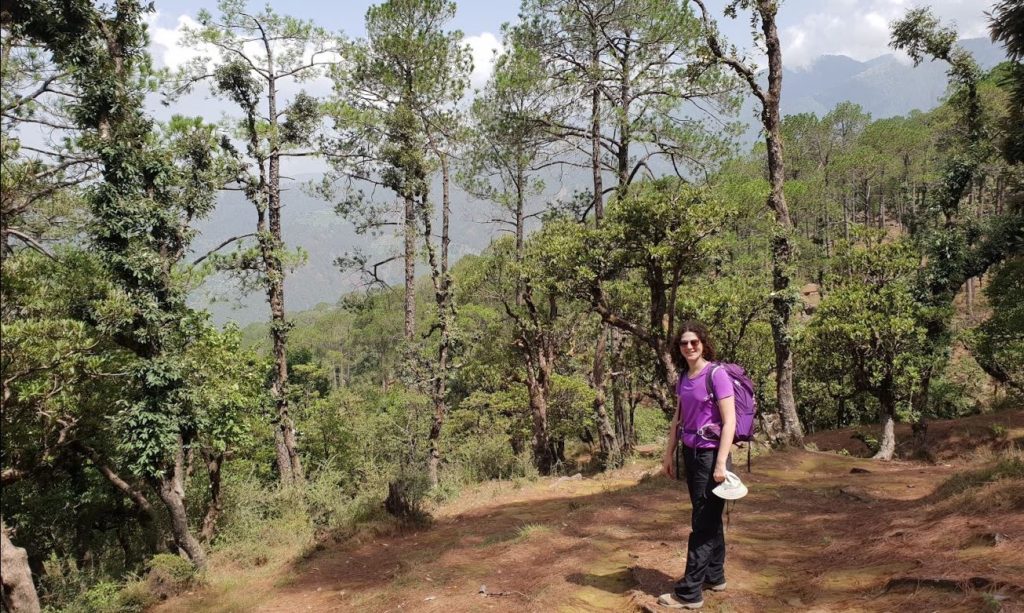
The village of Kareri is much larger than Ghera, mainly because it is spread out on both sides of the ridge and contains agricultural fields and terraces. At the entrance to the village we came to a flour mill on the stream, where the miller is (we just stopped him smoking). Then we arrived at Sanji’s family home – one of the first houses at the entrance to the village with amazing views.
The fact that Sanji is a local made him know every shepherd and salesman in an impromptu shop we met and made the stay in the area more pleasant.
This day can be shortened and reached directly by taxi to the village of Curry in the afternoon, but we preferred to walk pleasantly instead of driving on the region’s cluttered roads.

Sanji’s family lives in traditional living quarters: The entire family is in the same space as a kitchen in the day and bedroom where mattresses are laid out at night, with the lower floor dedicated to two cows and chickens. Although we were after lunch, Sanji’s family insisted that we stop for Chai and Maggie Noodles Instance in a spicy soup that was cooked on a bonfire inside the house. It all takes time, and while we tried to talk them through a bit and hear about them (which didn’t work out because only Sanji knows how to speak English).
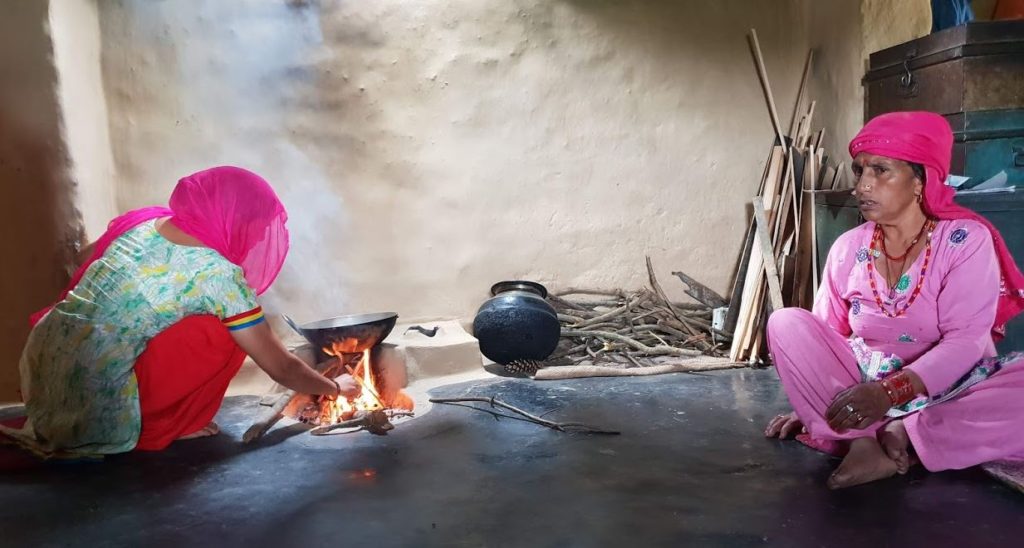
Sanji and his family have been working on building a guest house for tourists for six years. Because the construction is far from finished, we spent the night at the Guest House of another family in the village. The local family was very curious about us, although the English in them was very limited, which did not stop them from looking at us constantly and offering us hot tea once an hour. After a hot bucket shower we had a delicious dinner and went to bed.
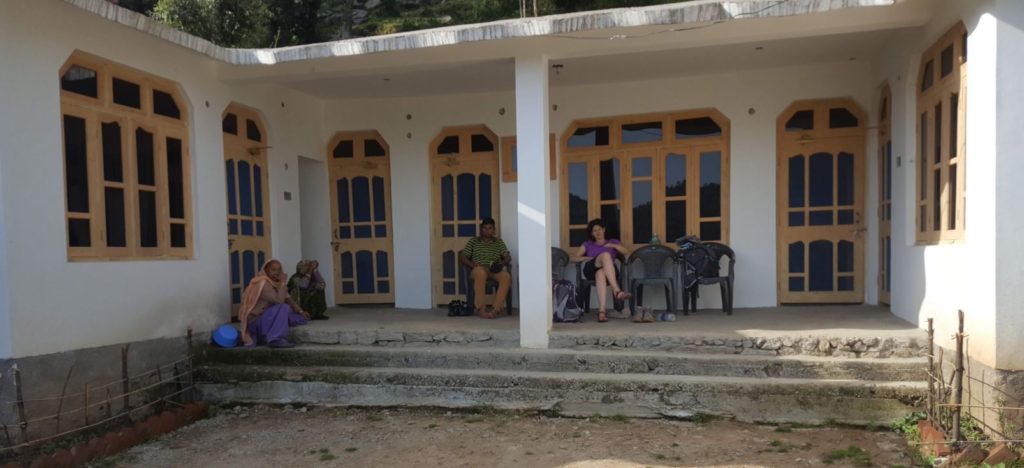
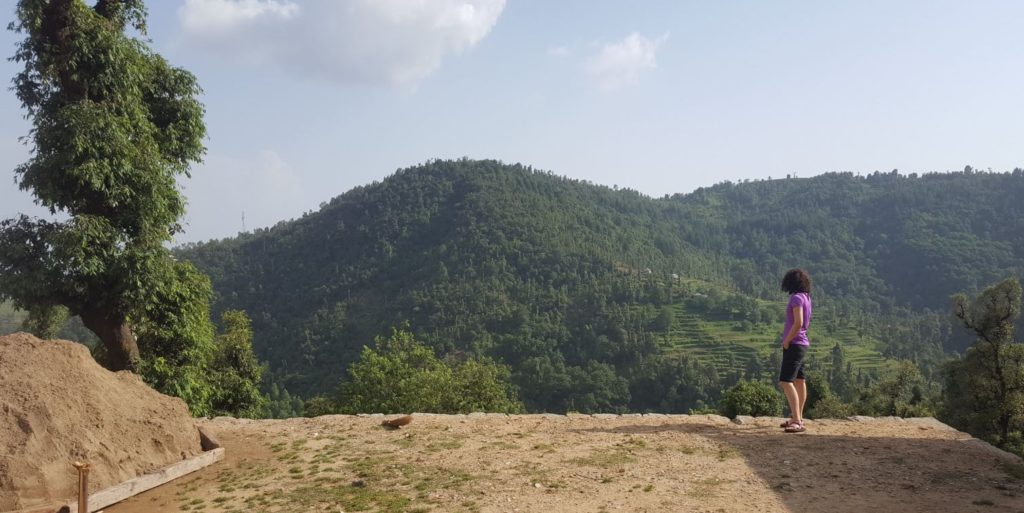
The second day - to Kareri Lake
The second day began at breakfast where we ate fresh eggs laid just a few hours ago by the chickens of one of the village families.
This day was all a climb: We started at 2000 meters and finished at 3200, and it was lovely to see the forest around us changing and becoming more coniferous.
Sanji turned our attention to the silver oak, an oak tree with silver leaves. As we went up the oak disappeared from the landscape and replaced it with golden oak, a wider tree and with more yellow-tipped leaves. From the moment we left the quiet village, there were lots of birds, butterflies and special plants and there were no other settlements or roads. We also came across snack and water sellers, all of whom also offered us a chai stop and hot maggie noodles.
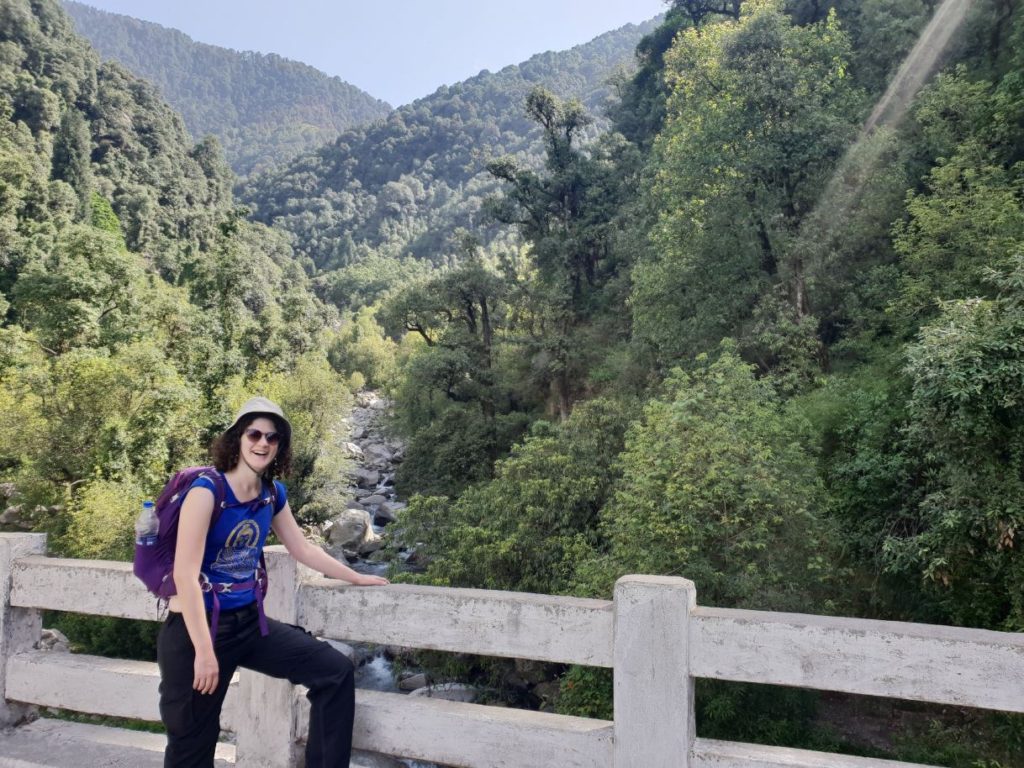
As we climbed the river became wider and more flooded, and flocks of herds multiplied. At about noon, it started to rain for about an hour (lucky I brought the raincoat and the nylon cover of the bag) so we took the time for lunch. The day ended at four when we reached Lake Kareri, after a long and somewhat arduous climb. The lake is not the most beautiful you will see, but the environment in which it is located is very peaceful and unique. In total we walked 13 miles, 7 hours walking net.
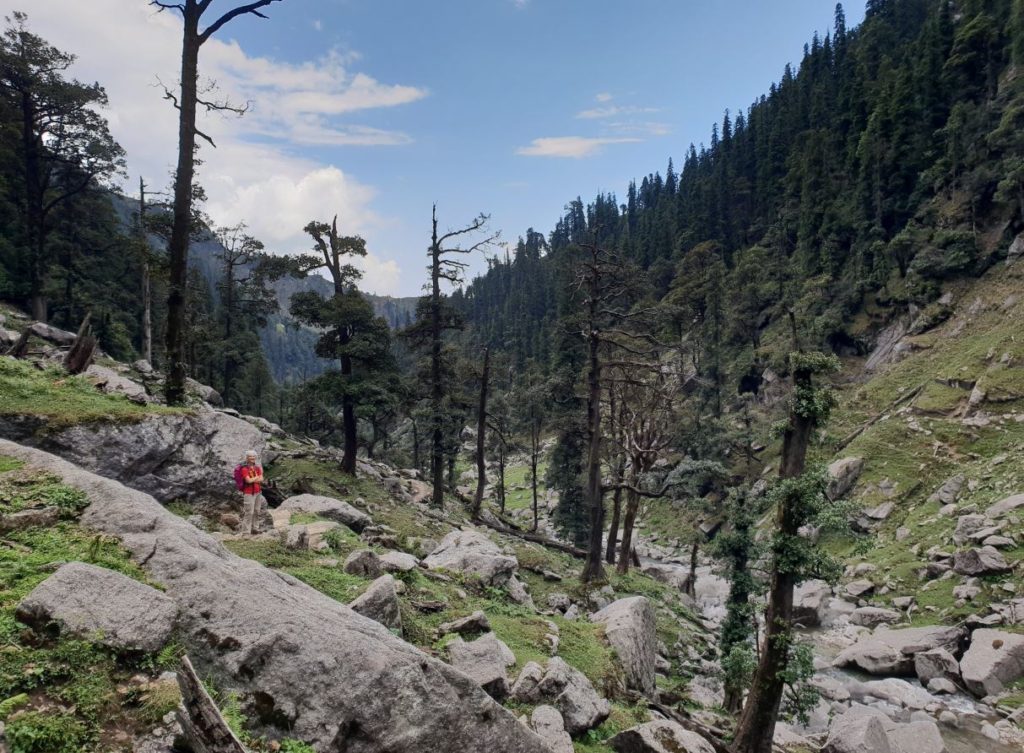
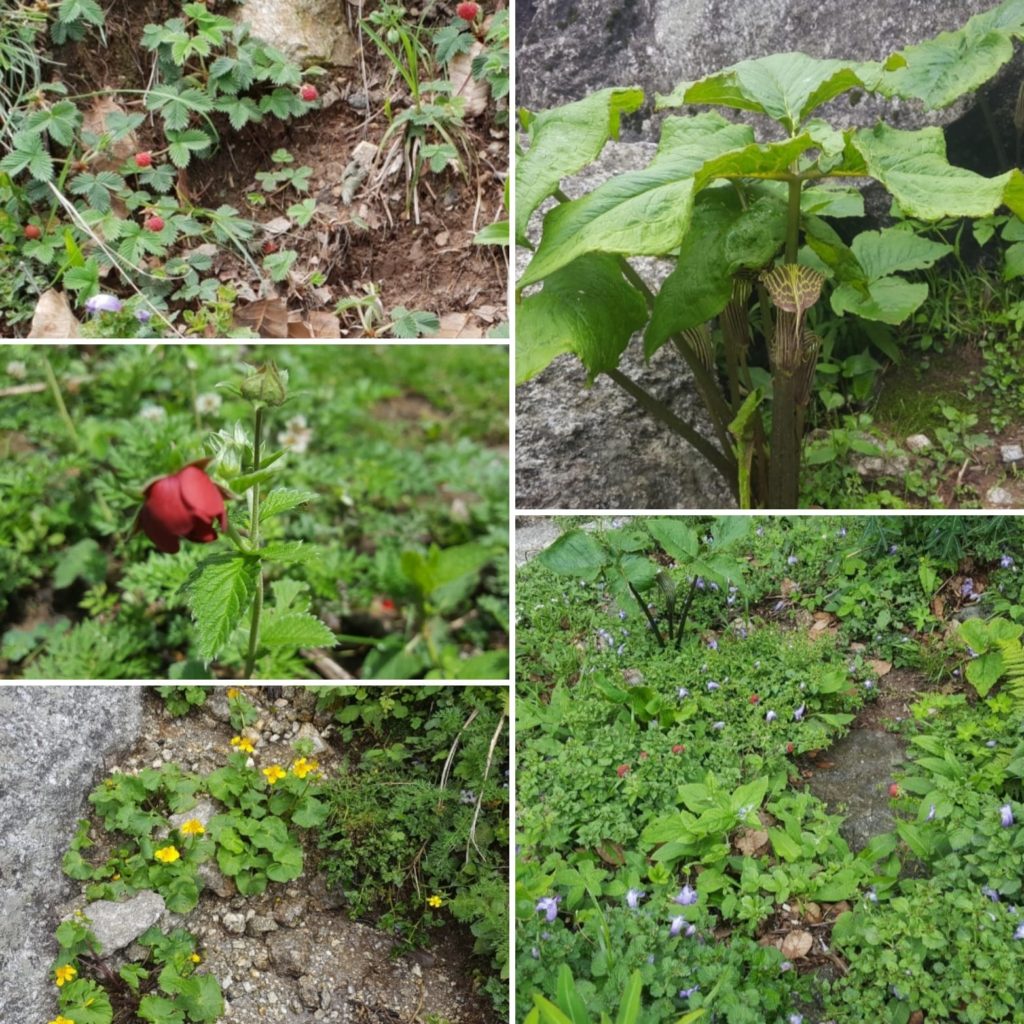
Lake Kareri and overnight camp
We spent the evening in the camp: you can open tents under the shelter near the temple or choose to set up the tent near the lake. There are no toilets here (there were, but in the best of Indian tradition no one maintains them and they are clogged) nor is it possible to shower. The camp store is in charge of snacks, chai and dinner. Sanji and the sellers lit a fire for all the camping guests.
We all got the meal together. The camp also has cute stray dogs and is likely to meet sheep and goats or just stray cows.
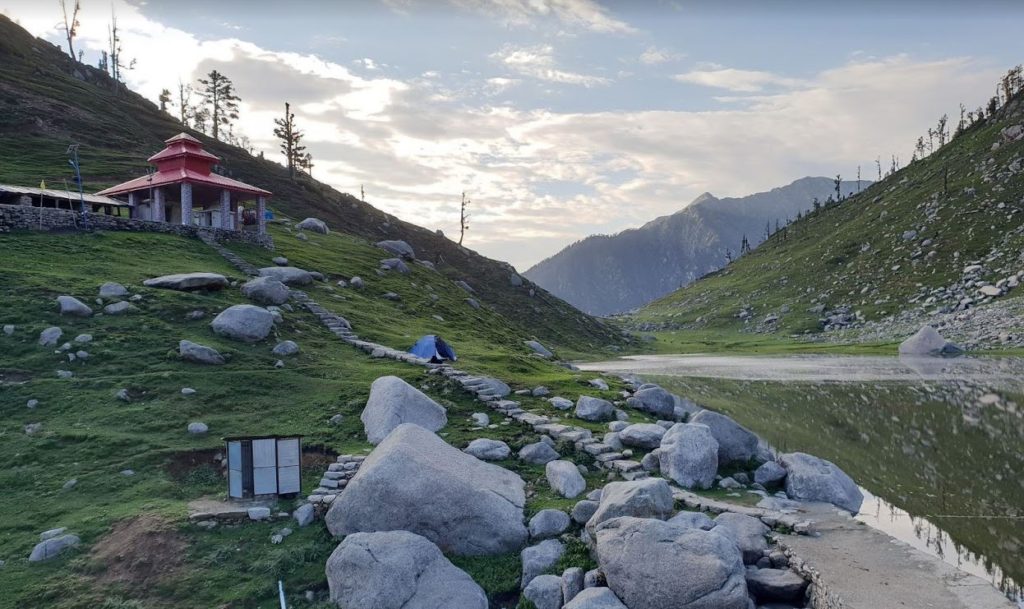
Third day of the trek - Back to McLeod Ganj
A night in a tent is not easy, but waking up to the quiet of Lake Kareri was worth the inconvenience. After breakfast which included boiled eggs and chapatti we started to descend back to the village direction. You can return directly to the village in the exact same way or choose a longer but different path, which included stunning views of the area. Obviously, we took the second and most interesting option, and after two hours of familiar descent, we started the climb to a new mountain. Because it is off the beaten path, there were far fewer hikers and sellers on the way and more flocks and herds.
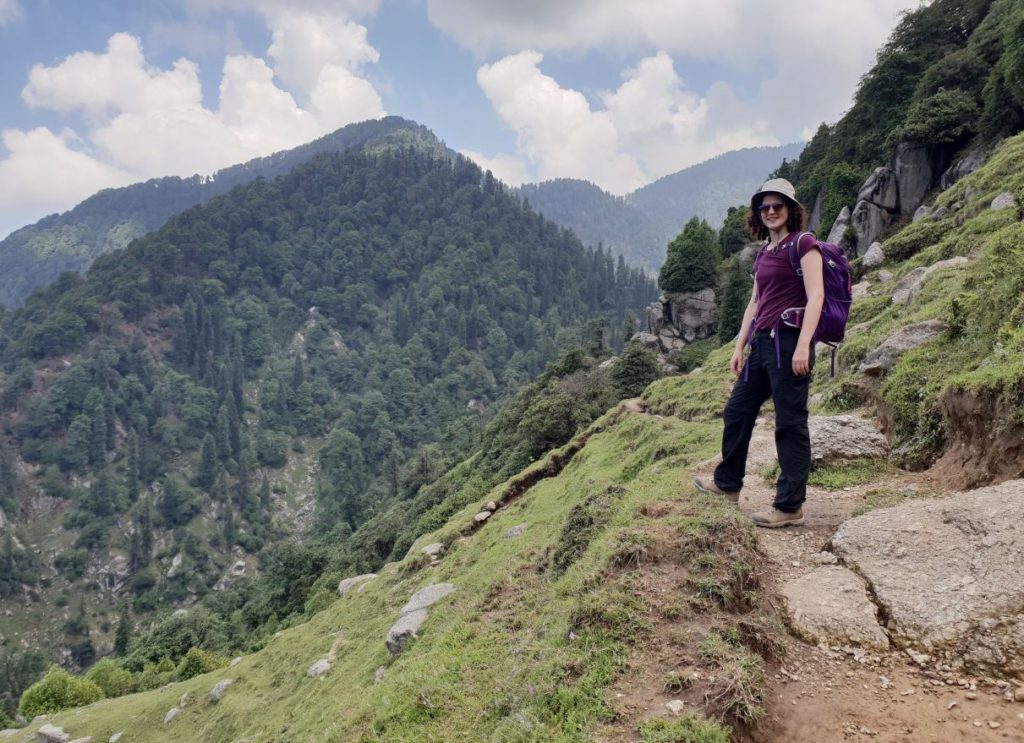
The most beautiful part of the day (and of this trek in general) was in the pass between the mountains, a narrow, long grassy section from which only mountains and forests could be seen to the horizon. At the end of the pass they had a group of shepherds who were there with the flocks during the summer months, who of course offered us chai while looking at the amazing scenery and catching up on the village gossip with Sanji. The observation height is 2700 meters and the mountain name is Jammurot.
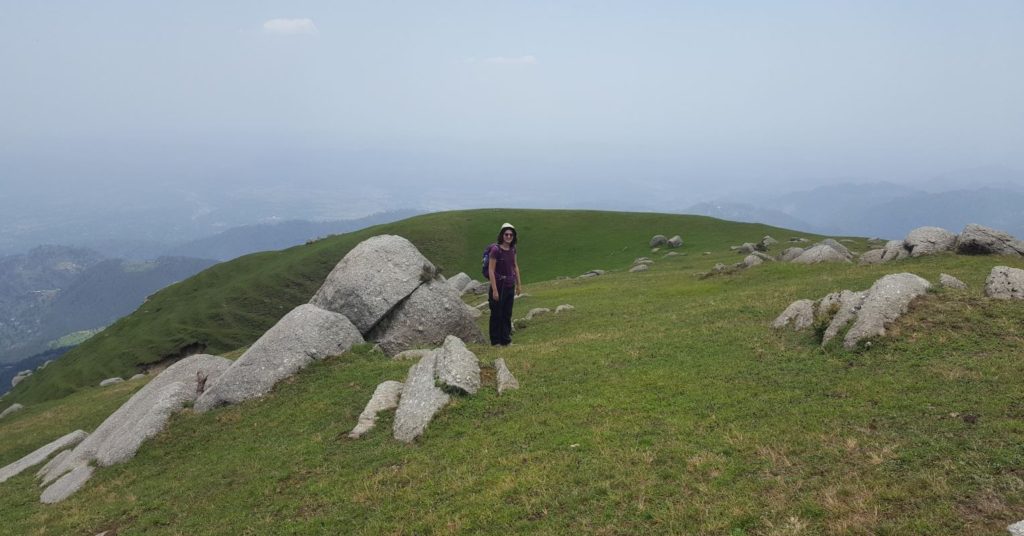
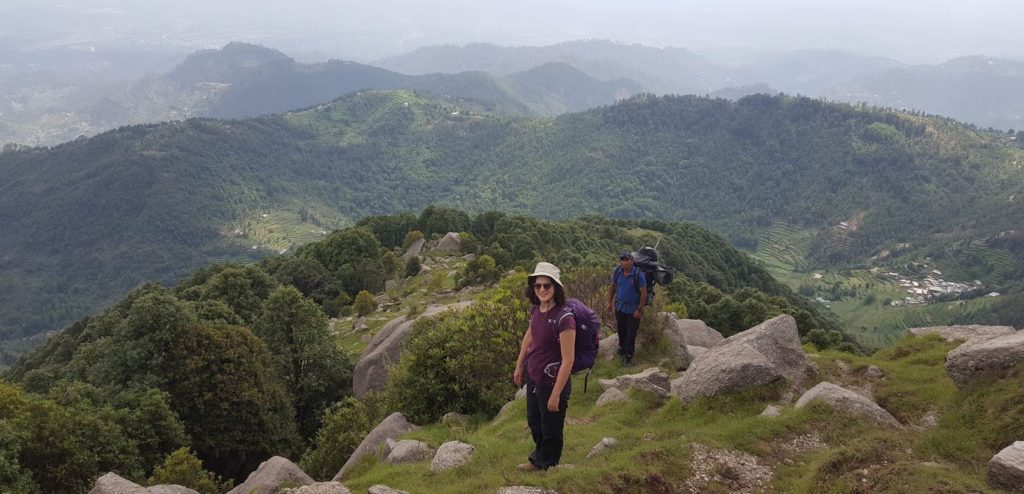
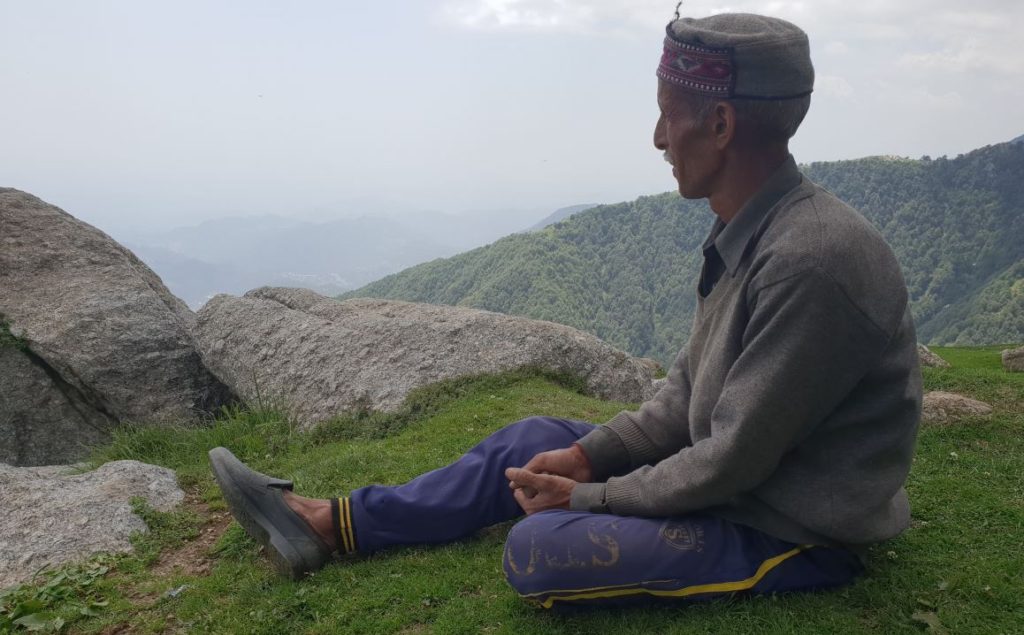
After the amazing observation we started a long descent back to the village of Kareri, this time we ascended to the second ridge of the village, on the ridge which has the road. This time too, the rain caught us on a longer flood but we were already in the woods again so we didn’t have to stop. When we got back to the village we boarded a taxi back to McLeod Ganj, a two hour drive! The roads are very cluttered, the rain also contributed to the mud and although the road was less than 15 miles by air, it took a long time.
In total we walked the last day 14 km, 7 hours walking net.
So in summary, there was a great trek with amazing views and great people we met along the way. Walking is great but not something that requires special fitness, and if you don’t mind doing one night in a tent and two days without cellular reception, I totally recommend!

